*NURSING > QUESTIONS & ANSWERS > C157 and C128 combined test with 70 questions answers with rationales (All)
C157 and C128 combined test with 70 questions answers with rationales
Document Content and Description Below
1. Quality improvement assumes that: a. Most problems with service delivery result from process difficulties, not individuals. b. Frequent inspection is necessary to improve quality. c. Employees g... enerally try to avoid work. d. Top management leads all quality improvement activities. Response A is correct. QI starts with the assumption that errors occur as a result of system failures, not individual errors. We should eliminate response C. In response B, frequent inspection might help ensure quality control over the process we have now, but will not help us exceed the capability of the existing process to improve quality. In response D, top management would be the CEO and senior management—there is not enough of them to go around to lead ‘all’ QI activities. 2. The term “quality” as used in quality improvement usually refers to: a. Characteristics of a product or service that bear on its ability to satisfy stated or implied needs. b. A product or service free of deficiencies. c. Having a high degree of excellence. d. All of the above. Although each of the definitions provided are different ways in which we think of attribute of “quality”, quality improvement focuses on delivering quality services or products as determined by the customer. Therefore, in QI, high “quality” rests on the ability to satisfy customer needs. A product or service that is free of deficiencies or has a high degree of excellence but does not meet the customer needs would not be considered a “quality” result (we would think of it as wasteful). Note also the IHI “Triple Aim”: Improving the patient experience of care (including quality and satisfaction); Improving the health of populations; and Reducing the per capita cost of health care. 3. The major difference between traditional “quality assurance” activities (e.g., keeping track of the total number of different procedures conducted in your practice, rates of adverse outcomes) and “quality improvement” activities is that quality improvement also focuses on: a. People and competency. b. Analysis of data. Combined 70 question test with answers c. Performance measures. d. Systems and processes. While quality improvement strategies also stress the importance of data analysis, rely on performance measures to benchmark progress, and occasionally assess individual capabilities, one of its key principles is the focus on systems and processes (rather than individuals or products) to introduce positive change to an organization’s performance. 4. Effective quality improvement does not require: a. Leadership and commitment from management with long-term vision. b. An increased emphasis on inspection of individuals’ work. c. Increased investment on employee education and training. d. Scientific redesign of processes/services Quality improvement strategies focus primarily on systems and process changes, but this does not mean that inspection of the results of individuals’ work or how well people perform in the existing systems should be ignored. Note: We’re talking about inspecting ‘work’ not a person. Inspection or observation is a scientific method used in evaluating how systems and processes are working and can provide clues on how or where to improve. So while we wouldn’t ignore the need to inspect individuals work, we also wouldn’t increase our emphasis on this aspect of the process. Strong leadership, team commitment, and enhanced education and training are all very necessary for effective QI interventions to succeed. 5. A leadership style that is said to motivate employees, and that optimizes the introduction of change is: a. Autocratic – A clear top-down approach where a single individual has complete power of decision-making and little discussion is had for external input. b. Consultative – A style where leaders engage subordinates/peers in the decision-making and problem-solving process, but ultimately make the final decisions for the team. c. Participatory – An approach where leaders interact with other participants as peers, engaging them in the decision-making process and playing an equal role in the process as others and jointly carrying out the problem solving activities. d. Democratic – An open style of running a team where leaders facilitate discussion among all members, encourage ideas to be shared, and consider everyone’s input in order to make final decisions for the team. Bringing about change in health care settings often involves the participation of all staff. Each professional plays a role in satisfying the organization’s customer (i.e., patients) since the responsibility for the care provided is shared. Therefore, whoever leads a quality effort practice should be prepared to take a central but equal (team-oriented) role in the activities identified for establishing change. Shared governance is a feature of Magnet hospital status; this is a staff-leader Combined 70 question test with answers peer partnership that promotes collaboration, participative decision making and shared accountability for improving quality of care, safety, and enhancing work life 6. Which representatives of a CV practice should be included on a quality improvement team to implement a new practice: a. Cardiologists only. b. Cardiologists and nurse practitioners. c. Cardiologists, nurse practitioners, quality improvement staff, and practice administrator. d. All staff directly affected by the quality improvement practice to be implemented. This is important because successful implementation of an intervention most often occurs when all relevant or affected parties are aware of the changes being made or tested, have been bought into the endeavor, are willing participants, and understand what their role will be in bringing about necessary changes. This is also important because these are the people who likely know the most about the process or system being changed. 7. When is it appropriate to collect and use data? a. Before the QI project, to prove a problem exists. b. During the QI project, to answer questions about the cause and help prioritize the implementation of improvements. c. After the implementation of the improvement to maintain the gain. d. All of Above. Because quality improvement is intended to be continuous, and because data gathering and analysis is a key activity of assessing performance and areas for improvement, it is always appropriate to collect and use data to inform these processes. It is up to team members to evaluate if ceasing to collect data for a QI intervention is reasonable at any point. Or to state another way, we need to substantiate the need for a particular improvement (and its associated cost) with data. We need to collect data and analyze it during the PDSA cycles. And we often want to continue monitoring to ensure we have sustained the improvemen [Show More]
Last updated: 1 year ago
Preview 1 out of 30 pages
Instant download

Buy this document to get the full access instantly
Instant Download Access after purchase
Add to cartInstant download
Reviews( 0 )
Document information
Connected school, study & course
About the document
Uploaded On
Apr 07, 2021
Number of pages
30
Written in
Additional information
This document has been written for:
Uploaded
Apr 07, 2021
Downloads
0
Views
41

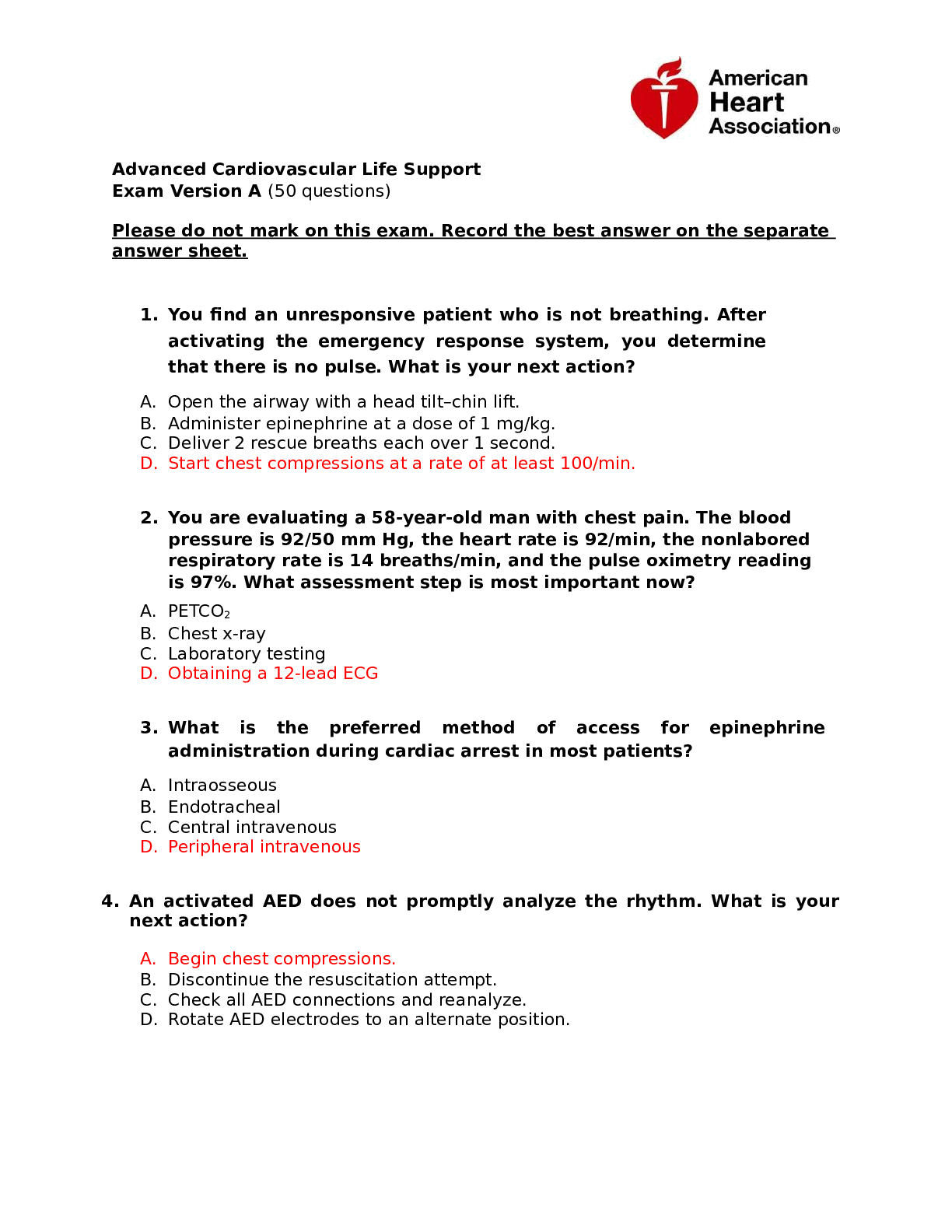


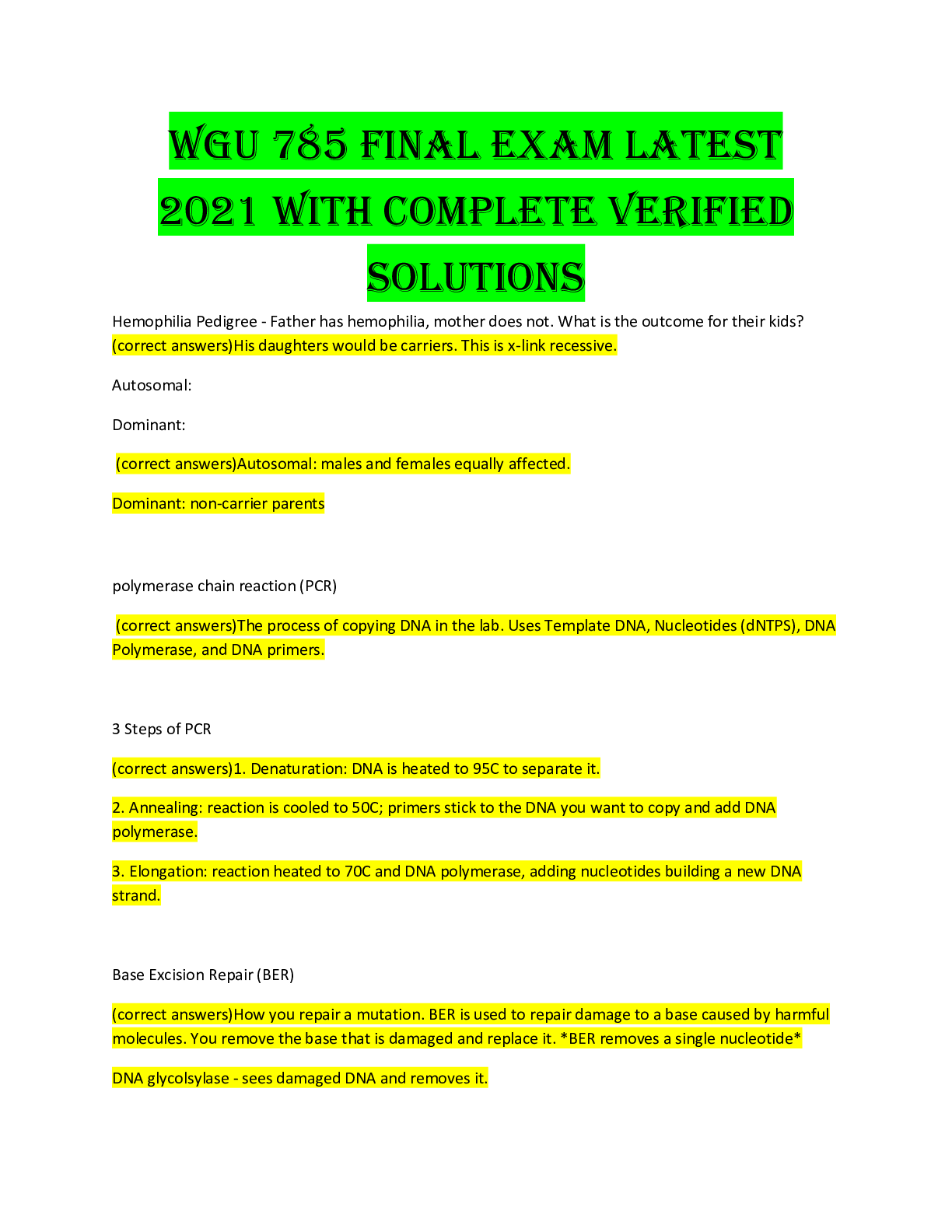

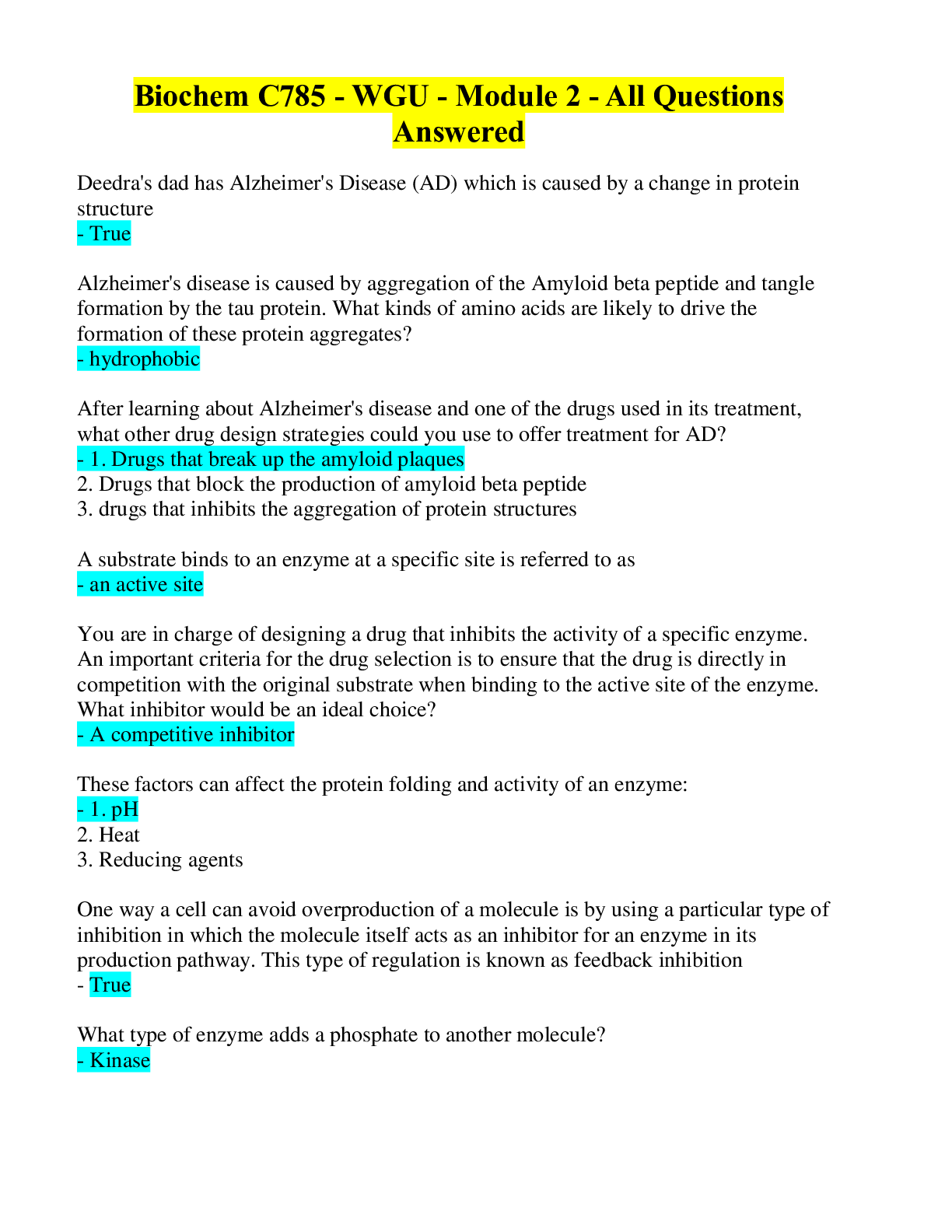
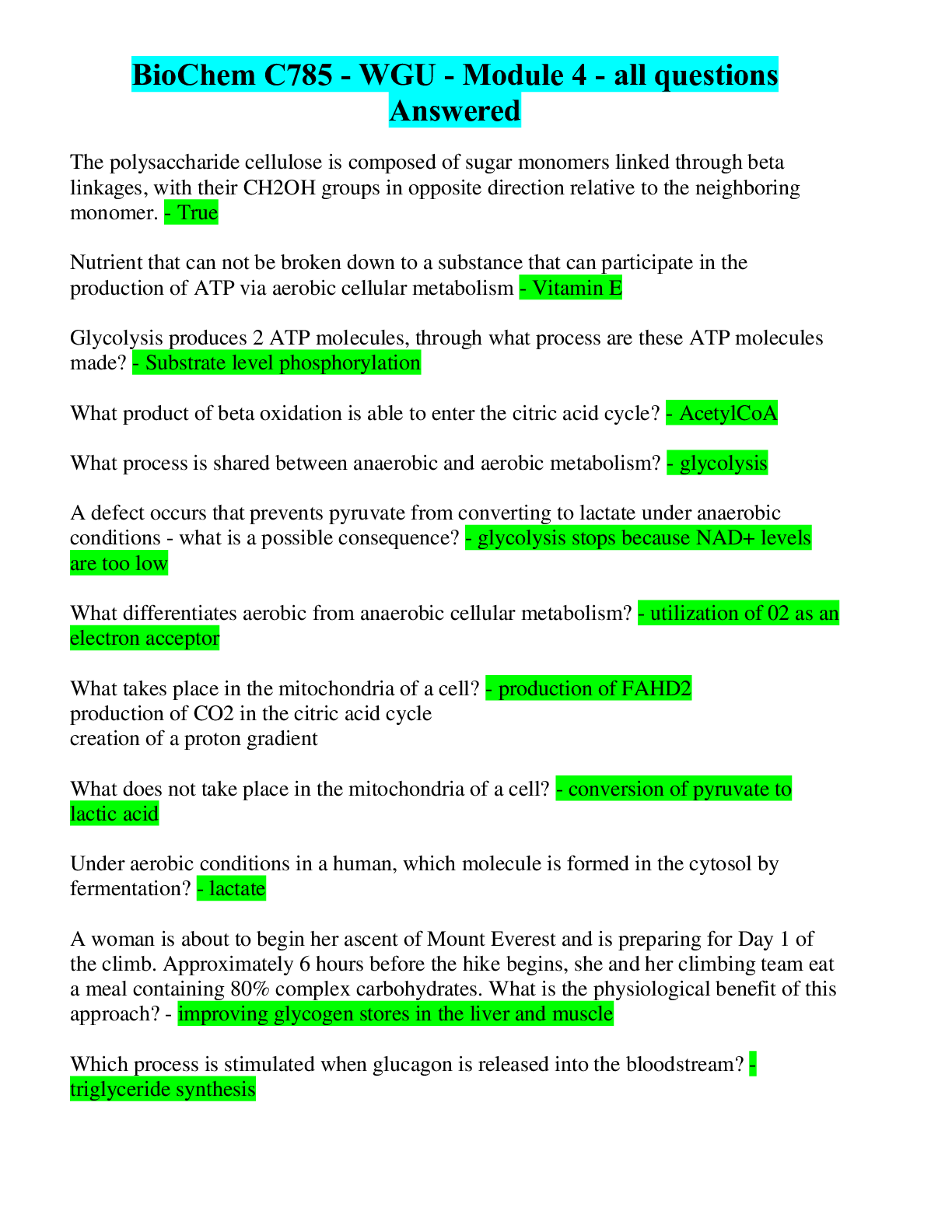
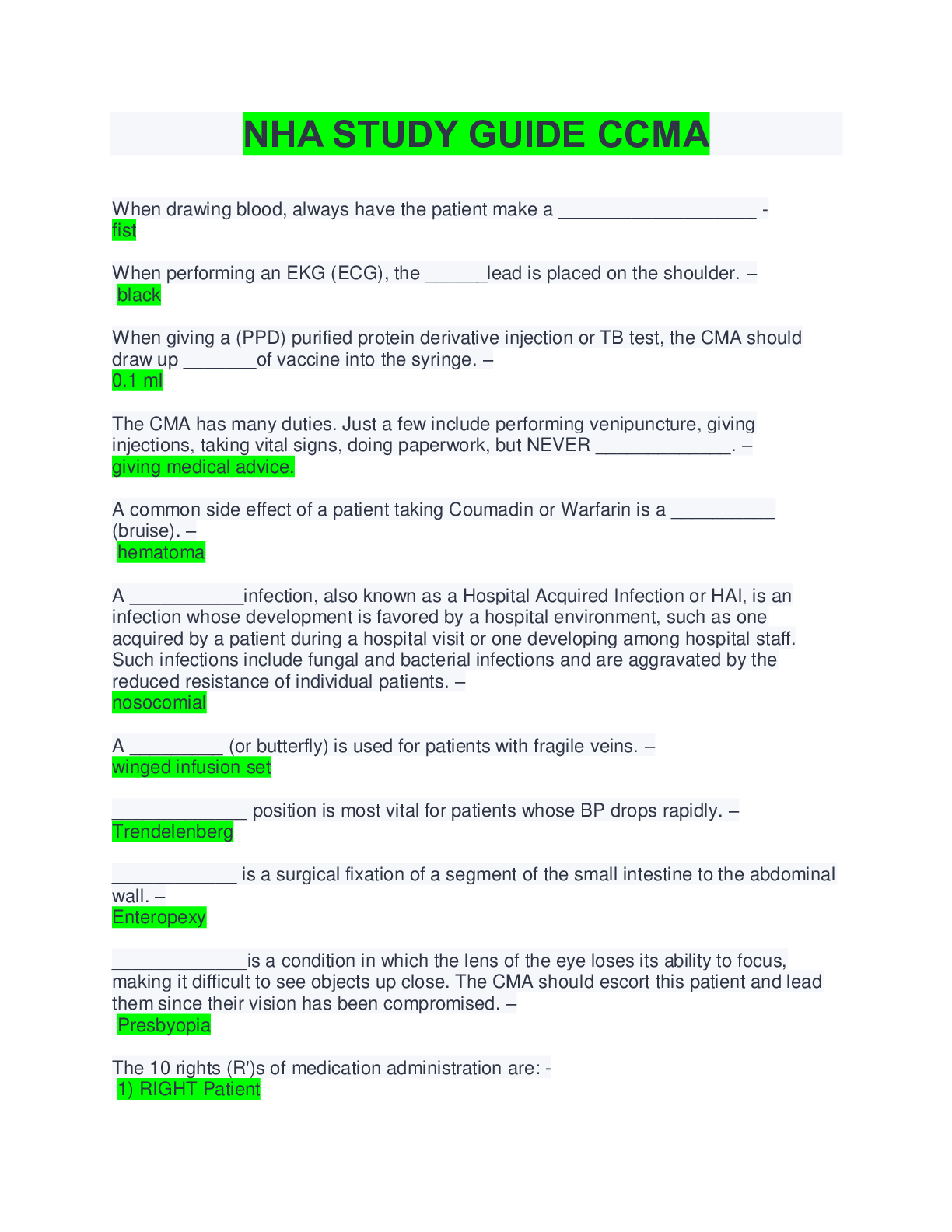
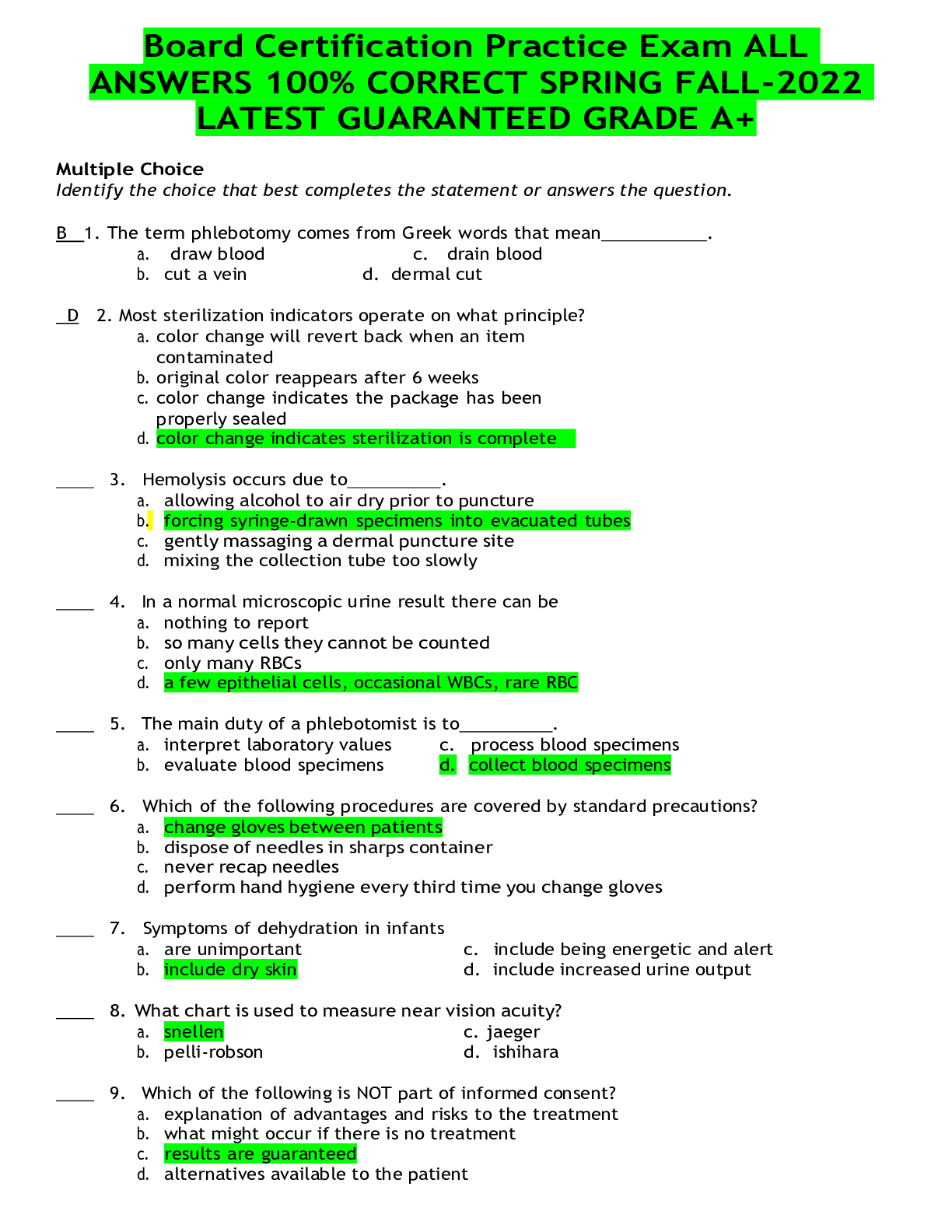
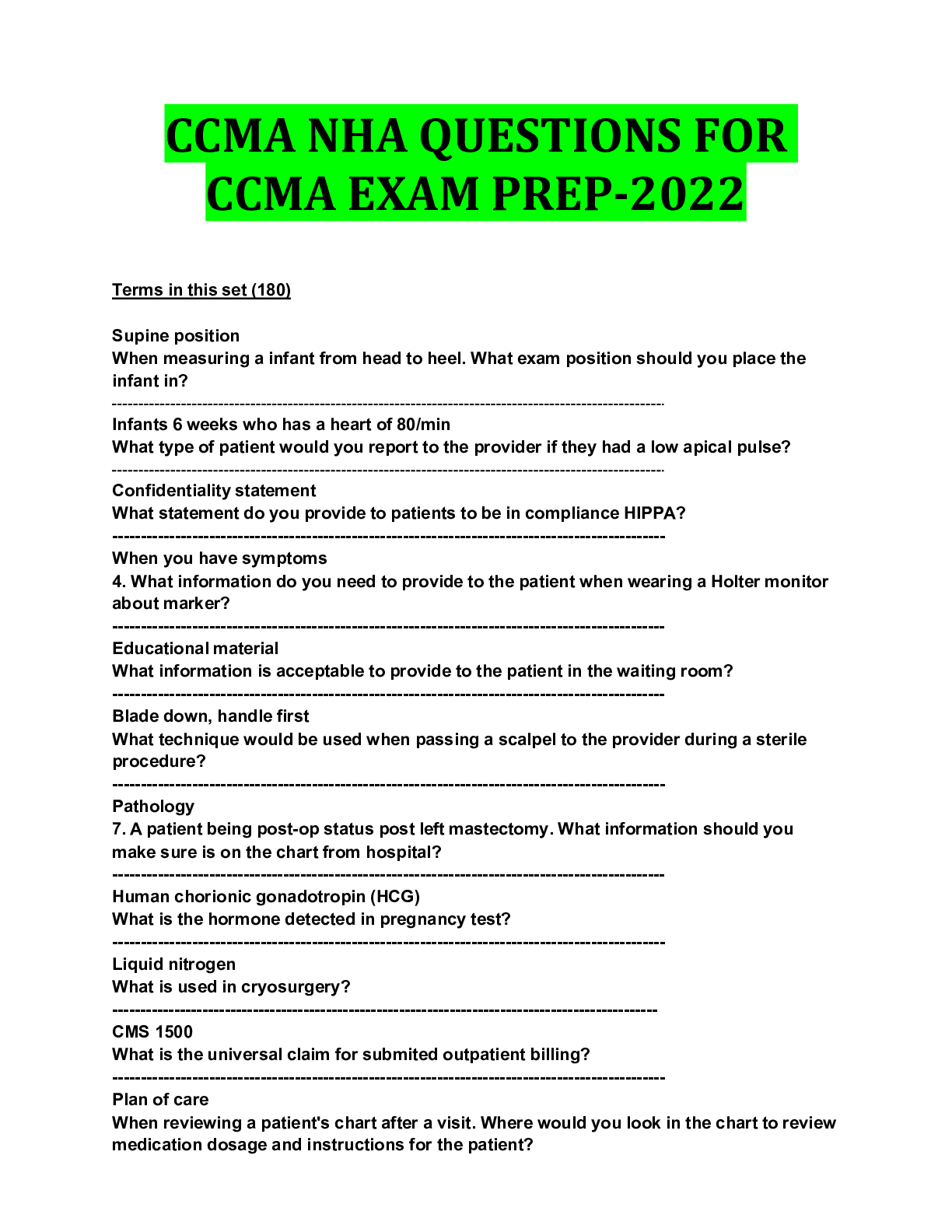

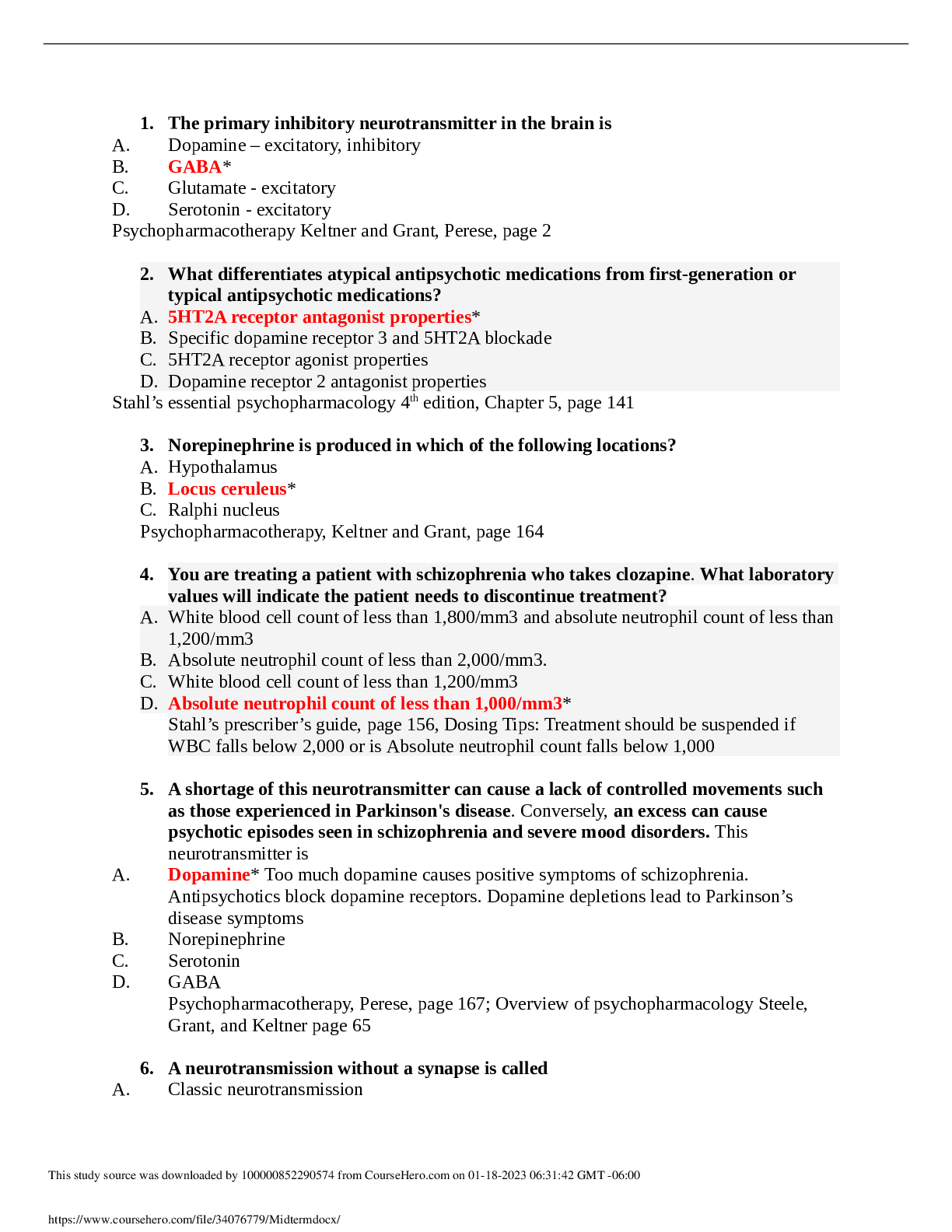
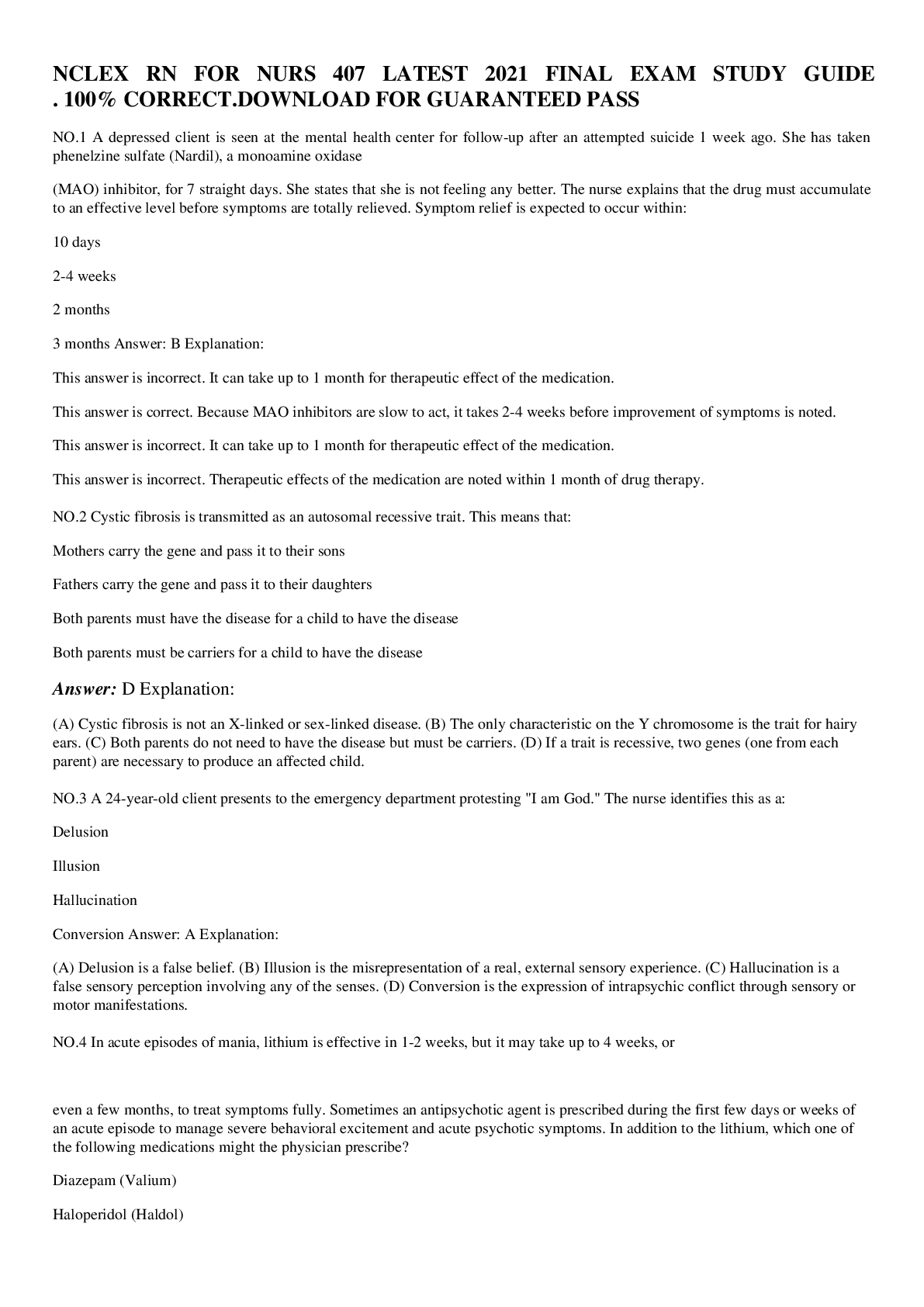
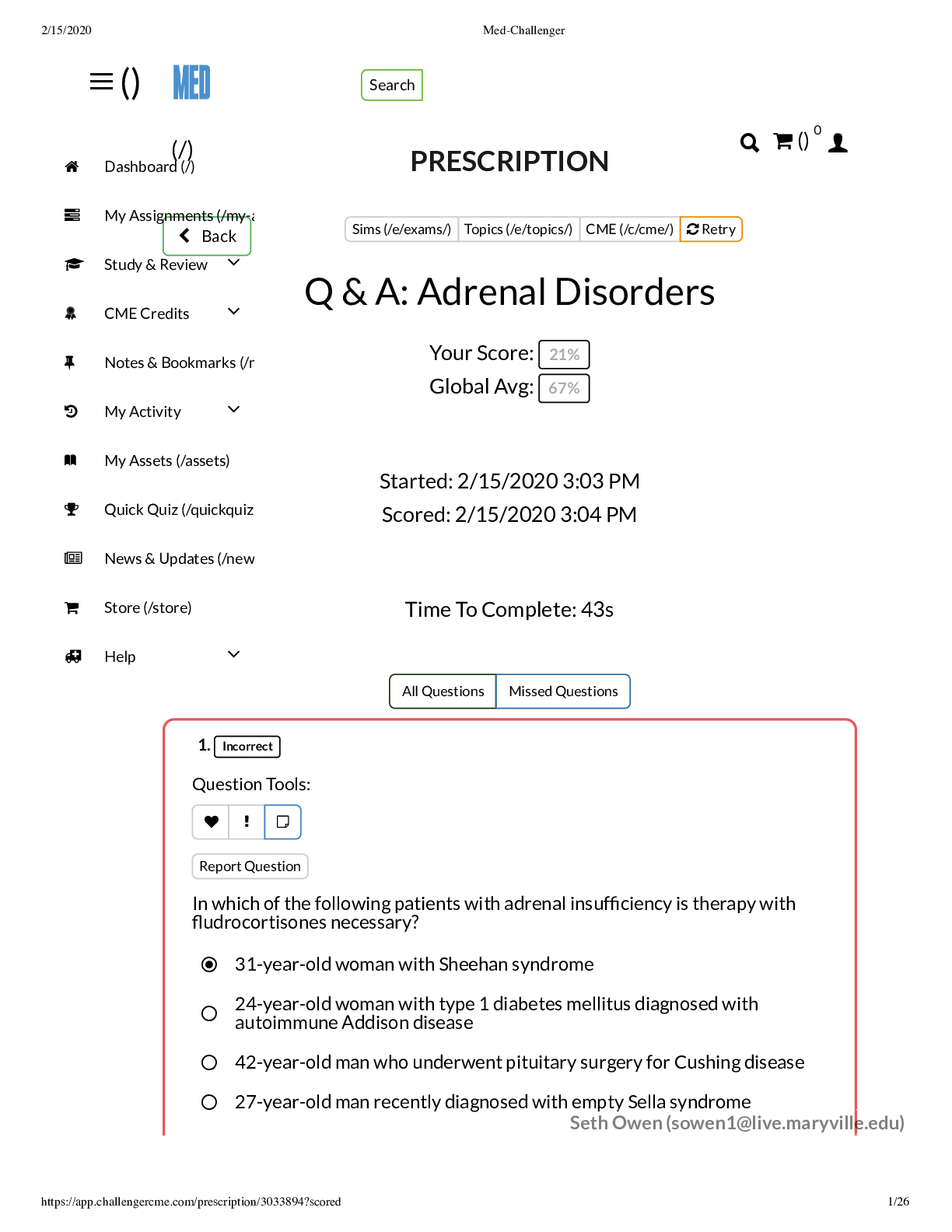


.png)
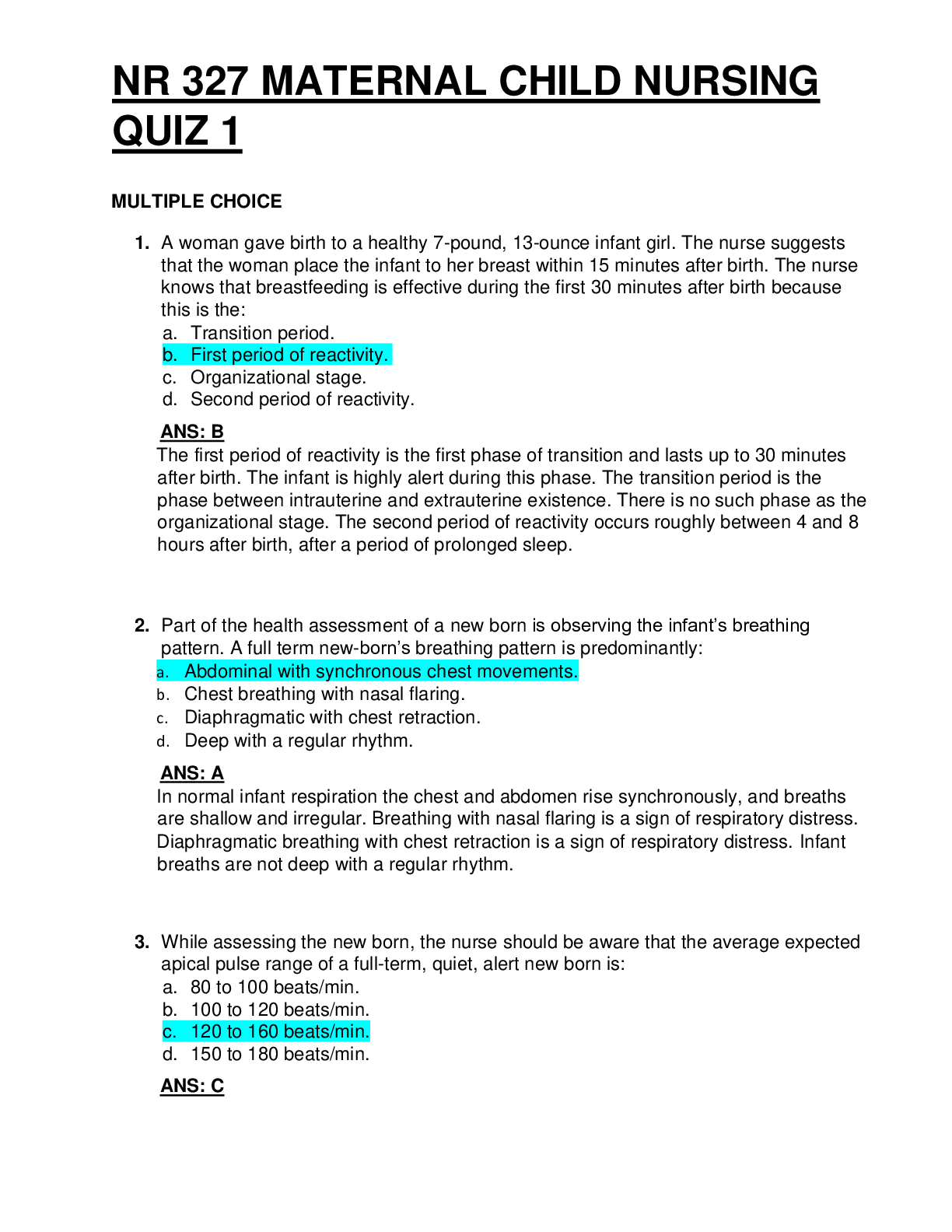
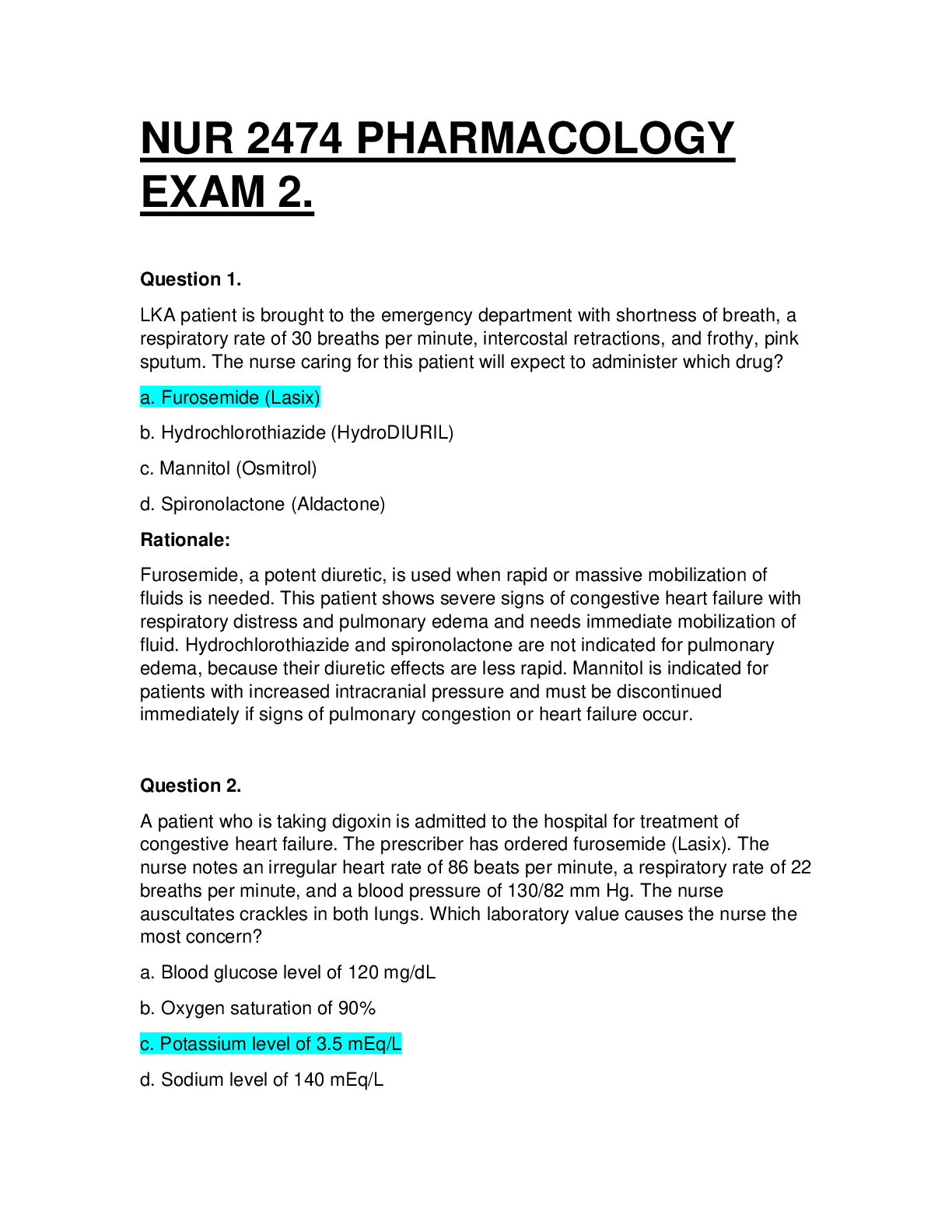
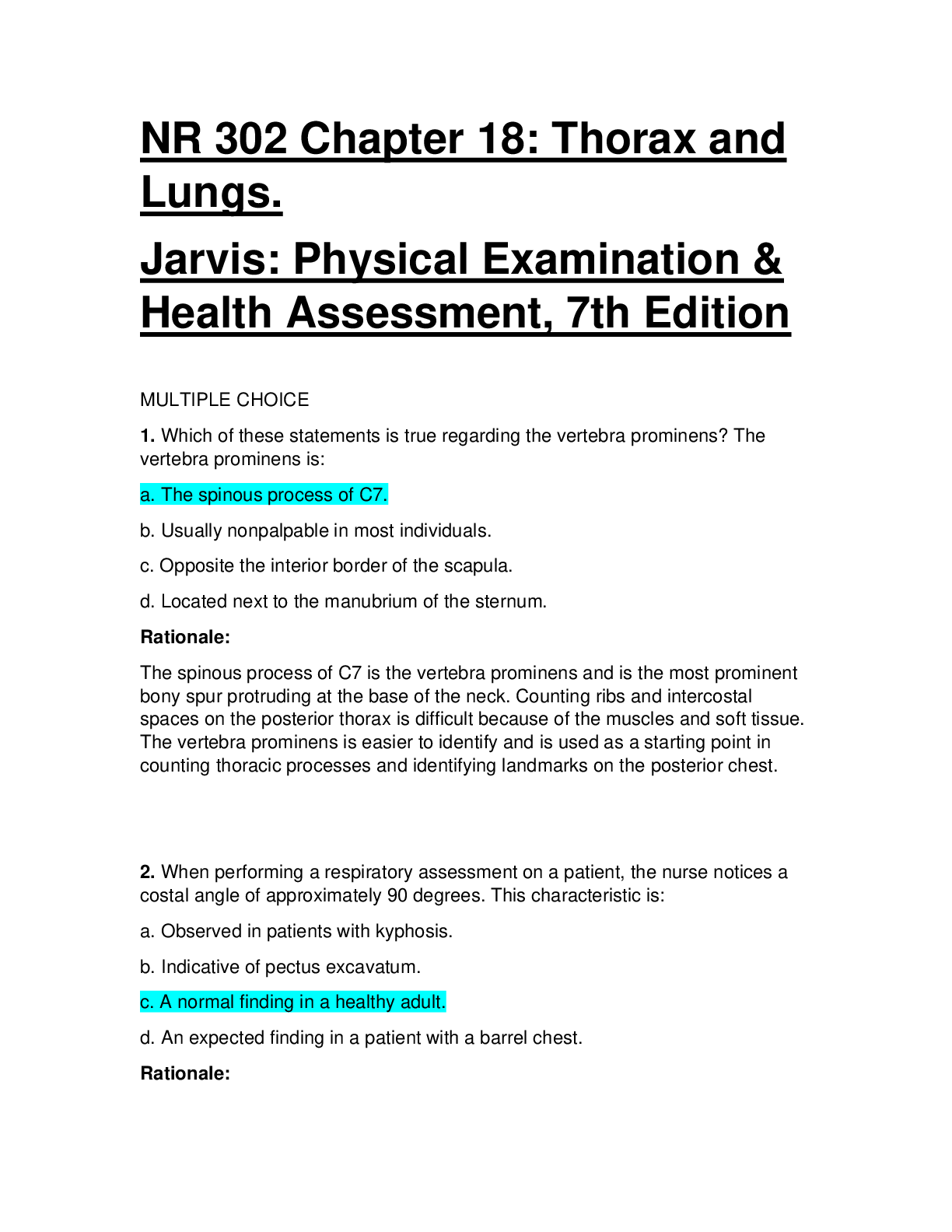
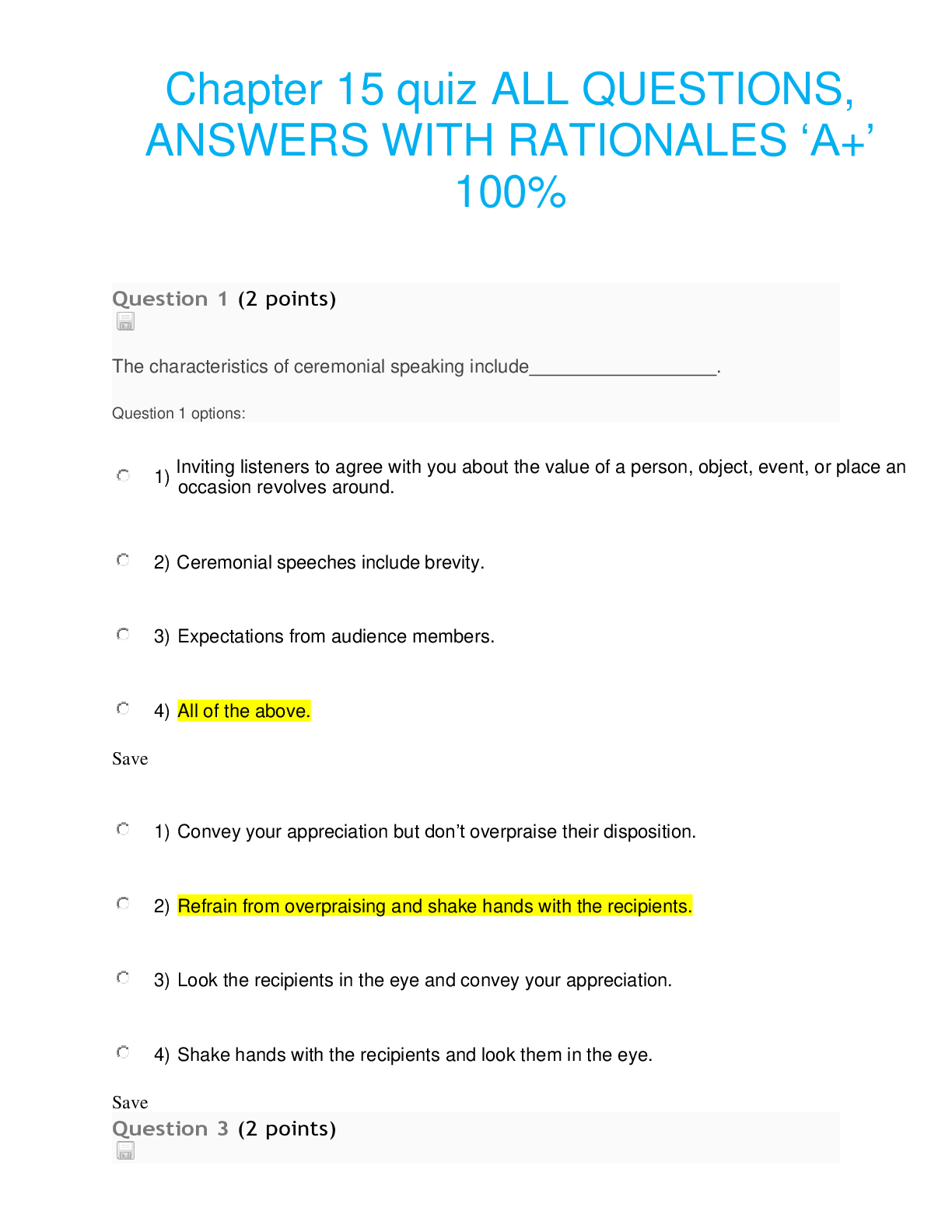
.png)

